Have you just rescued a bat pig that needs training? In this article, we’ll provide a simple-to-follow, easy, and fun French bulldog training guide.
Your French bulldog may have the temperament of a rambunctious 3-year-old and the humor of a stand-up comedian. However, just like children, our puppies must learn to be well-behaved members of our families.
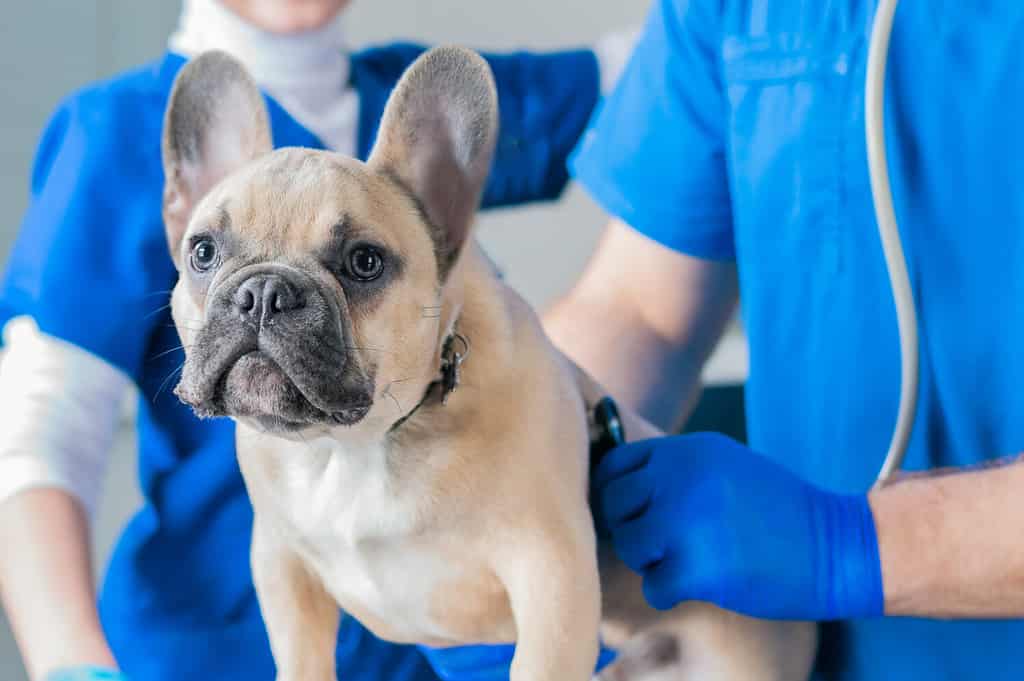
French bulldogs have the temperament of a rambunctious 3-year-old and the humor of a stand-up comedian.
©Andy Gin/Shutterstock.com
French Bulldog Training Benefits
Curious about why training your French bulldog is important? Here are a few benefits that this French bulldog training guide will provide.
- If you train them at a young age, it will stick into adulthood. Therefore, you will help your puppy grow up to listen to you.
- Correct challenging behavioral problems before they start.
- Build a strong and healthy relationship with your canine.
- Prevent injury to your puppy.
What Equipment Do I Need for Training?
Below is a brief list of items to help you get the most out of training:
- Leash that is at least 2m long.
- Harness. Due to Frenchies being prone to breathing issues, it is better to use a harness than a collar to prevent the risk of breathing accidents.
- Treats.
- Toys for teaching your Frenchie to fetch.
- Crate.
- Soft Grooming Brush.
- Patience.
Recommended Cues
- Sit.
- Stay.
- Lay down.
- Go potty.
- Fetch.
- Come.
- No.
- Crate.
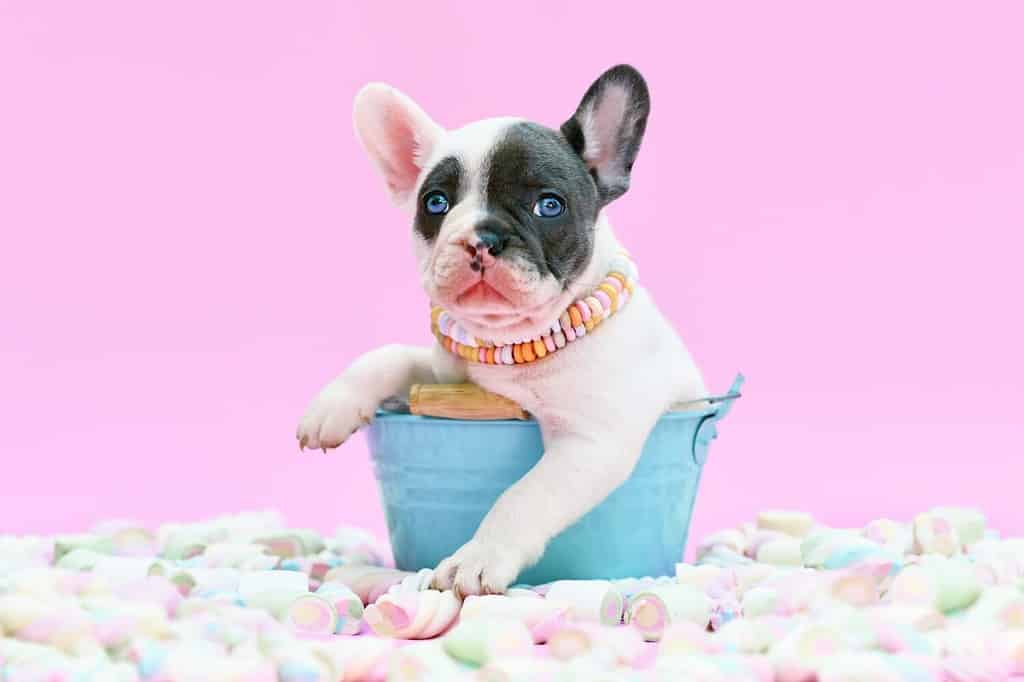
French bulldog training can help prevent unwanted behavior in the future.
©Firn/Shutterstock.com
French Bulldog Training Guide Milestone 1: 12 Weeks
During the 12-week milestone, your puppy should become acquainted with your home. Moreover, it is best to give them a few days to get used to your home, the people in it, and all the noises that they may need to become accustomed to.
Before your puppy arrives, you should already have puppy-proofed your home by reducing exposure to electronic cords, harmful chemicals, and toxic human foods. Plus, they also should have received at least 2 vaccines before entering your home. Usually, the breeder takes care of this.
Key Training to Focus On
- Potty training.
- Socialize with family.
- Crate training.
- Sit.
- Familiarize your puppy with the environment.
- You can begin alone-time training.
- Sleep Training
- Getting acquainted with grooming rituals.
- Name training.
French Bulldog Training Tips
- Since French bulldogs are ceremonial animals, they do best when a schedule is followed.
- Never create one schedule at a puppy stage and then change it up when they are an adult. Not only does this cause mass confusion, but it can lead to unnecessary stress.
- As mentioned above, training your French bulldog should happen the second they walk in the door.
- If your puppy displays interest in agility, it is recommended to wait until their joints are fully developed. Typically, their joints fully develop in 8 months to a year.
- Frenchies benefit most from positive reinforcement training. In other words, using training that provides praise will be beneficial compared to training that does not.
- For training sessions to be effective, they must be short, quick, and fun. Frenchies like to feel like they’re playing a game rather than strenuous or boring training methods.
- Due to their small muzzles, they are prone to respiratory distress. Therefore, keeping fresh water on hand will be beneficial to preventing their systems from overloading.
- If your puppy starts panting heavily during training, take a break and let them recover.
- When it comes to crate training, never use the crate as a place for time out. The crate needs to feel like a safe and secure place for your puppy to relax, sleep, or nap.
- French bulldogs can pack on the pounds with ease. Furthermore, choose natural treats such as blueberries, apples, and sweet potatoes.
- Avoid training in excessively hot weather. Frenchies don’t do well in hot climates due to their sensitive respiratory systems.
- While it may be obvious, do not get a French bulldog if you are not a fan of routines. These pups thrive on a consistent routine to maintain a healthy life.
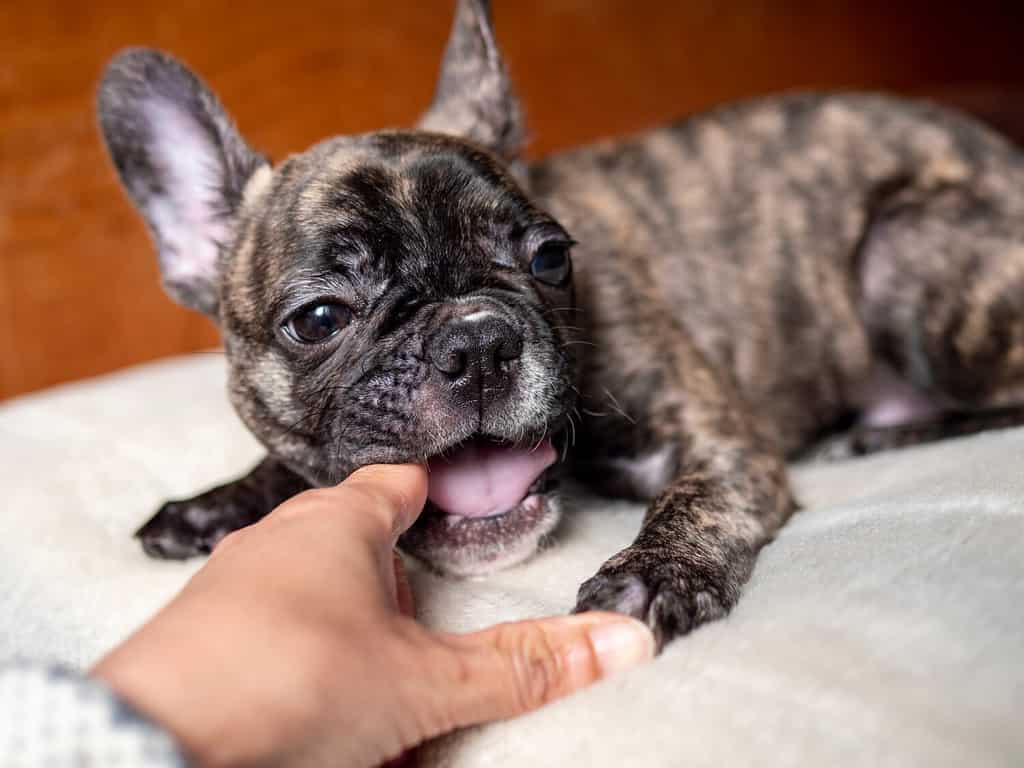
Since French bulldogs are ceremonial animals, they do best when a schedule is followed.
©Lee waranyu/Shutterstock.com
Milestone 1: 12 Weeks
Potty Training
One of the most important pieces of training that your puppy should learn first is going potty. Potty training should be done around 4 to 6 six times a day to prevent accidents. First, they should go potty as soon as they wake up. Next, you may want to bring your dog to go potty after they nap, eat, and drink. Also, any time your French bulldog has had playtime, it should be followed by potty breaks as well.
Sleep Training
Begin by placing the crate a few inches from your bed. This helps provide a sense of safety and lets you become acquainted with all the noises your puppy makes when they need to eat, go potty, or want to wake up.
Alone Training
Once you have learned their schedule, it is time to slowly separate. Plus, your pooch will have to learn that they cannot be attached to your hip at every moment (no matter how tempting that is for either one of you).
Every week, you will move their bed a few inches away from you until they are across the room. Once they get used to sleeping across the room by themselves, you will begin to remove yourself. Slowly increase alone time until they can handle 30 minutes to an hour of being alone. On the other hand, never leave your puppy alone for more than 2 hours to reduce the chances of stressing your puppy out.
Grooming Training
Keeping your French bulldog’s appearance clean and tidy helps them look and feel healthy. Plus, it helps prevent skin infections that French bulldogs are prone to. Your pup may take some time to get used to being groomed.
Daily Brushing
Begin with brushing your puppy’s coat following their first potty break in the morning. Brushing their coat should be done every day to clear debris and dirt from their coat. After brushing their coat, it is advised to use a scent-free baby wipe on the area around their tails, wrinkles, and their ears.
Nail Trimming
Another important part of your pup’s grooming routine is to include weekly nail clippings. If you are a first-time French bulldog parent, you may want to ask your breeder for a tutorial on clipping nails. On the other hand, if clipping their nails makes you nervous, ask a trusted friend or veterinary professional to help you.
Bathing
French bulldogs do not require frequent bathing. However, they should still be bathed every month. When bathing your pup, be sure that you are using a puppy-safe shampoo.
Playtime and Training
Frenchies are super smart pups. Therefore, stimulation and education that keeps them occupied is a must to prevent destructive behaviors. Play training can also help your pup learn to share their toys, be gentle when playing, and learn to fetch their toys.
Begin your playtime with your French bulldog by teaching them to sit, fetch, and walk while being led on a leash. Each time your puppy does what you want them to, reward them with cuddles, kisses, or a yummy treat.
Crate Training
Your canine’s crate should be their safety space, kitchen, and area of rest. To provide adequate space, their crate should provide enough room so that your pup can move around without bumping into the sides or door.
Begin training by introducing your puppy to the crate. Let them sniff it, walk in and out, and explore it. You also may want to place a few pieces of cooked, unseasoned chicken in the crate so that they associate good things with the crate.
Utilizing feeding time and adding toys to create a positive and welcoming environment can help them adjust smoothly.
To gain the full benefits of crate training, make sure that you place the crate in an area of the home that is quiet. Plus, be careful not to place the crate so far away that your pup may feel isolated.
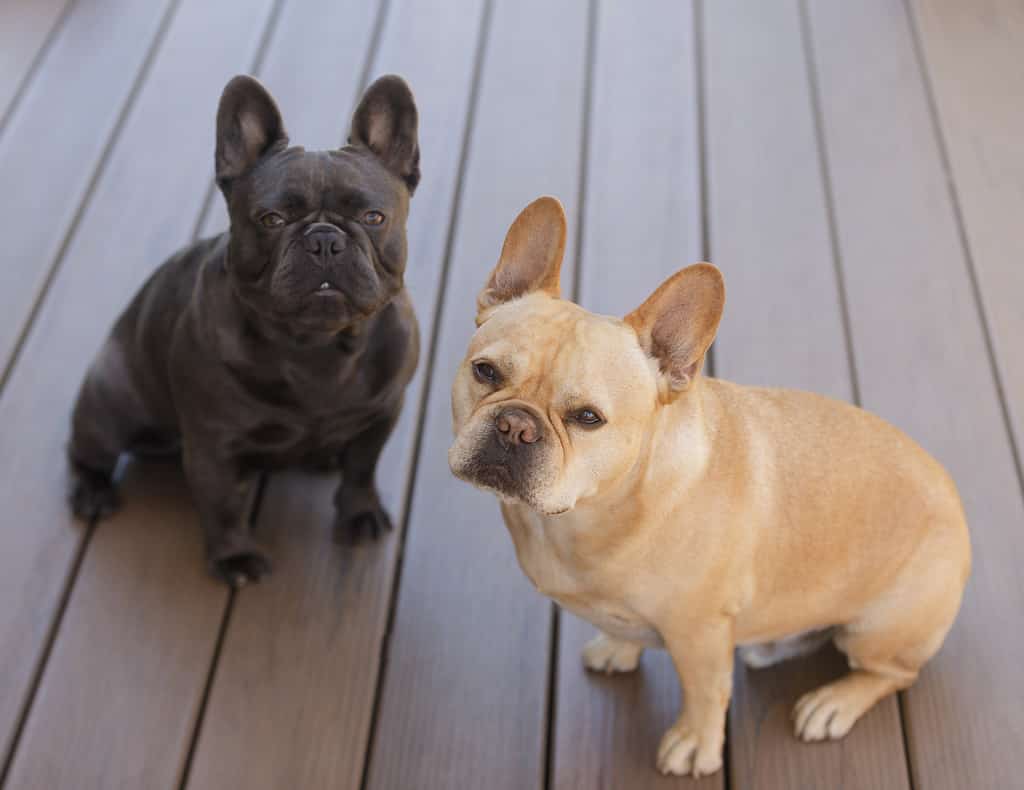
Your canine’s crate should be their safety space, kitchen, and area of rest.
©iStock.com/yhelfman
Milestone 2: 4 to 6 Months
By 6 months of age, your puppy should have successfully learned how to play, go potty, and a few other basic obedience training.
At this time, teething will be the next subject to train your puppy about.
It is important to remember that they are teething and may not intend to hurt you or anyone in your family. They are looking for a way to dull the painful teething process.
Keep belongings, furniture, and anything else you don’t want to be nibbled on out of their reach.
If you find your pup is nauseous or has some diarrhea, do not worry; this can be a part of teething.
One way to help with teething is to provide a soft, chewy toy that they can chomp on that won’t hurt them. Anytime they begin to nibble on you or guests, you can give them the toy to distract them.
During this period, you can expect your French bulldog to lose 28 baby teeth while gaining 42 adult teeth.
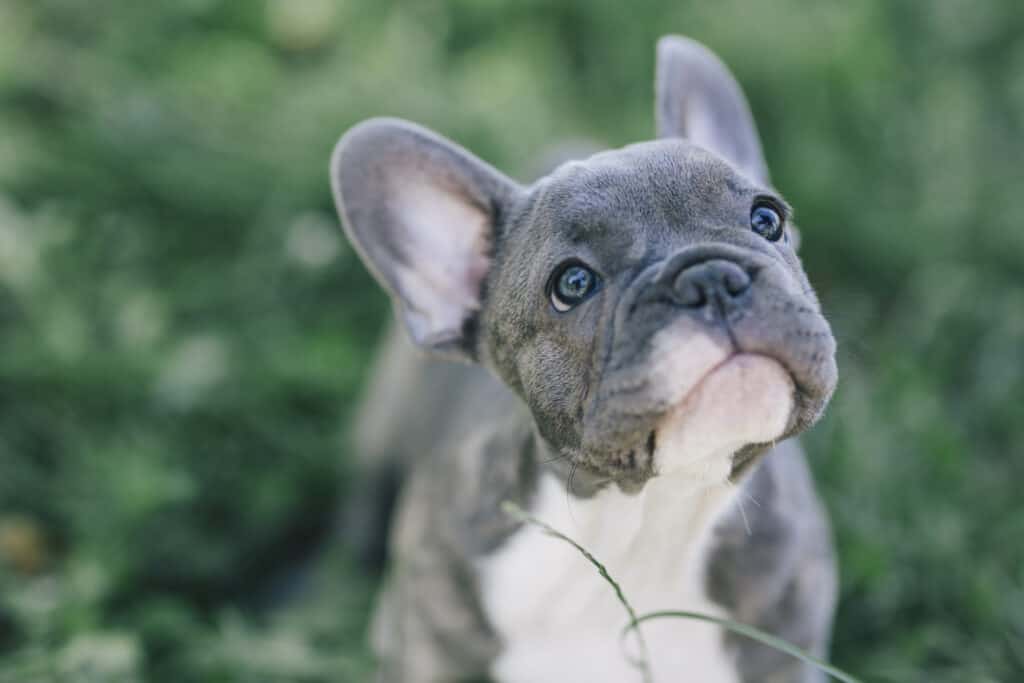
During this period, you can expect your French bulldog to lose 28 baby teeth while gaining 42 adult teeth.
©Angyalosi Beata/Shutterstock.com
Key Milestone 3: 6 to 8 Months
By this point, it is vital to keep in mind that their hormones begin to change to prepare for adulthood.
You should also have chosen whether you want to spay or neuter them.
During this time, your pup may display behavior changes, asserting dominance with other dogs in the home or attempting to mate with other pups.
Female pups can display swollen vulvas and may have urinary accidents.
Male puppies may try to maintain order amongst other pups in the home, mount female pets, and attempt to take food away from their siblings.
The most effective way to help hormonal behavior is through spay and neutering.
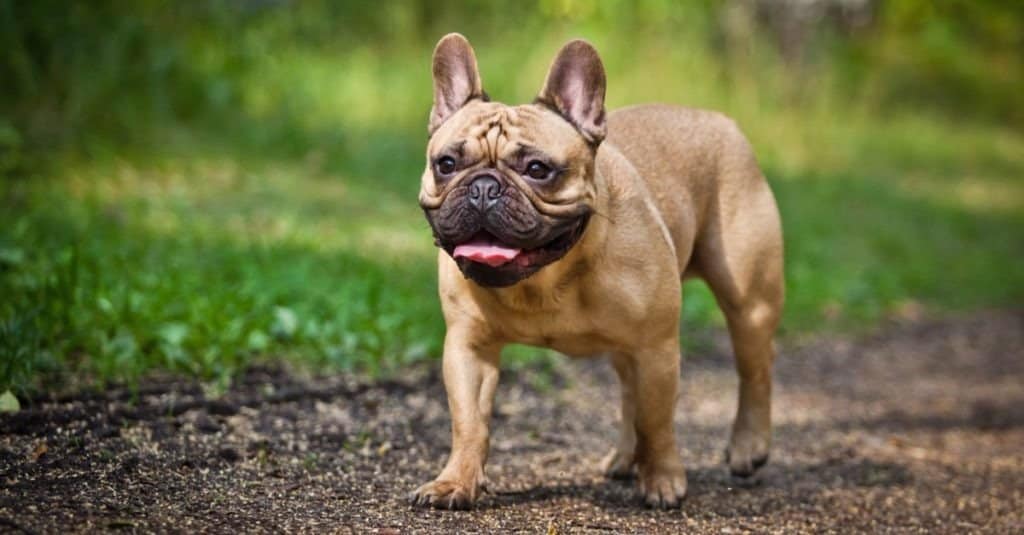
The most effective way to help hormonal behavior is through spay and neutering.
©dezy/Shutterstock.com
Final Thoughts
This French bulldog training guide will help you raise a well-behaved bundle of fur. Remember, patience, consistency, and time will help the training process run better.
The photo featured at the top of this post is © Vutravee Charuvatana/Shutterstock.com
Ready to discover the top 10 cutest dog breeds in the entire world?
How about the fastest dogs, the largest dogs and those that are -- quite frankly -- just the kindest dogs on the planet? Each day, AZ Animals sends out lists just like this to our thousands of email subscribers. And the best part? It's FREE. Join today by entering your email below.
Thank you for reading! Have some feedback for us? Contact the AZ Animals editorial team.







